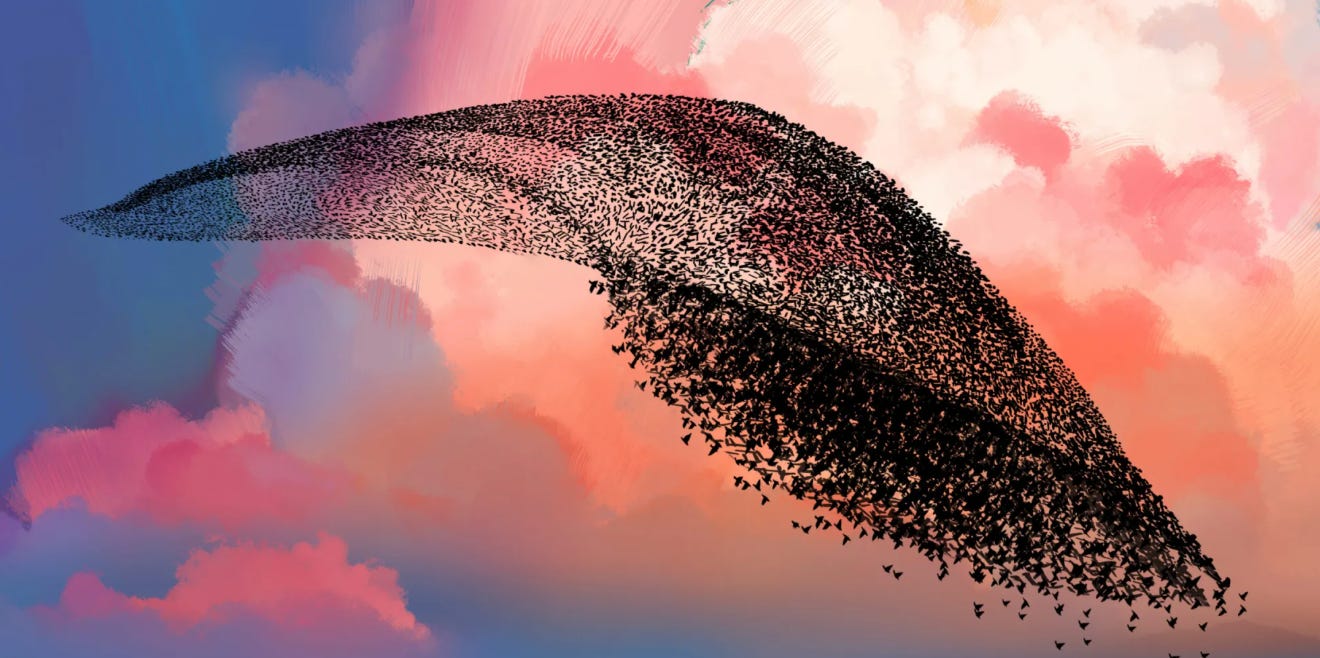A couple of years ago I took a private meeting with the Head of Learning and Development (L&D) for an enormous and venerable Swiss pharmaceutical company’s innovation unit. This company was the largest client of a global executive coaching and leadership development firm whose executive leadership team and most senior coaches I was training in Autonomics.
The woman I met with was tasked with creating a learning culture inside the unit, which was home to 5,000 of the company’s top performing and highest paid employees, and whose purview was new drug discovery. She had asked to meet with me privately, and I did not know why, but I took the call, and found myself on Zoom with her. When we met she was sitting in her attic somewhere on the outskirts of Basel. It was mid-morning in California, and early evening in Switzerland. The meeting took place in February: the sun was rising here, it was setting there.
The meeting had more of the tone of a confession that I was anticipating. Essentially what she told me was that the company’s 5000-person innovation unit, whose work was fundamental to the company’s purpose, was categorically unable to innovate, plagued by stagnation. The reason for this was quite straightforward. No one was willing to share their best ideas. Despite being extremely highly paid, despite the fact that many of these people had spent much of their careers in the field, many having worked for the company for well over a decade, the prevailing ethos of the unit was one in which people guarded their ‘intellectual property’ fiercely, where their greatest fear was that their ideas would be stolen, or they would not receive proper credit.
This led to siloing, skirmishes over intellectual territory, power grabs, and most alarmingly a stunning lack of innovation. As I listened to her I watched the expression on my face– in the parallel view in Zoom– shifting from astonishment, to deep disbelief, to resignation, to a sort of profound grief. By the time the call ended, I was shaking my head, and I had to go outside and take a walk to get right again in my body.
How is it possible, I found myself wondering, that in an organization with functionally unlimited resources– this is a company with a $260 billion market cap– where abundant resources are the norm, not the exception, they have created a culture where instead of being generous with their ideas, the very people who are paid to develop ideas – like that is literally their job- are the most stingy with them? How is it that this has become the norm in the culture, not the exception? How is it that despite massive investments in coaching and leadership development this is still the fundamental character of this organization’s culture?
But the longer I reflected on this, the less it surprised me. There is a reason I am not a professor in the employ of a University. (Well, actually there are two reasons.)1 This kind of guarding of intellectual property, siloing, and politicking is a hallmark of the University system. What professors want is tenure: a form of senior rank and immunity from firing. (Which makes sense because if you are a professor and get fired, guess what, you are likely moving to a different city.) And since there is a limited supply of tenure, professors are competing for it. Scarce resource (tenure) drives competition for it. And the way competition works is that you set yourself up against your peers. Instead of collaborators, they become adversaries. Instead of an expanded ‘Us’, they join a threatening ‘Them’. And so, in universities as well, there is a pervasive competition for funding, for accolades, for recognition, for acknowledgement, all pointing in the direction of competition for tenure. Is it necessary to point out that this systemic hierarchical structure undermines the articulated mission of every university since the beginning of time?
Same is true across so many domains of our modern lives. If you step back a little, and blur the contexts, you start to be able to recognize that the patterns of incentives in these systems are predictably producing this behavior. Yet this is extremely poor systems design. And it’s also deeply stupid. If Roche were to create a new blockbuster drug, the aggregate benefits to everyone employed there would be far greater than the individual benefits that can accrue to any one high performer. Which is to to say that if the system gets smarter, all boats get lifted more than any one boat gets lifted by doing something individually incredible.
We have, in these cases, a systemic failure to collaborate with consequences that extend across everyone who comprises these systems. But as I find myself shaking my head, bemoaning the lack of innovation at Roche, bemoaning the fiefdoms that permeate most universities, I have to take a very sober look in the mirror because if I’m honest I can see that I’ve fallen into this same pervasive delusion myself.
We, by which I mean modern western humans, are really not good at collaborating. The incentives in the civilizational operating system to which we subscribe are economic and egoic, and the social climate in which we are embedded, which is increasingly rife with corruption, economic inequality, poverty, and violence is magnetizing dark character traits. The modern (un)culture has created a giant petri dish that is selecting for dark personality traits.
You can blame psychopaths named Trump and Musk and Zuckerberg and Bezos and Altman, and I do, but you also have to understand that these are animals adapting to a context that is systemic. And the systemic context is very very sick.
The disease infecting modernity is, at its root, alienation. This has been translated into several mental illnesses over the millenia, the core of which is what I call the schizophrenia of supremacy. As a simple example of how this plays out in the world, I would encourage you to listen to Musk or Zuckerberg or Trump or Altman talk, and to recognize that the actual outcomes of anything they are saying is the categorical opposite of what is coming out of their mouths. What they speak is the dark twin of what is.
Trump: Big Beautiful Bill
Reality: Shitpile Catalysmic Grift
This alienation, and the ensuing schizophrenia has iterated into the articulation of social structures arranged uniquely on a vertical axis (power over), and a systematic neglect of horizontality, which is the context of relatedness. Indigenous and animistic societies, by contrast, index heavily on horizontality, because this is the practical worldview that emerges from the recognition that we are embedded in sets of relations of mutuality (e.g., part of an eco-system).
I have written about modernity extensively in two places: So, About that Death Cult You Joined? Essay Unmasking Empire in Modernity, and the forthcoming GROUND: How Modernity Disconnected from the Earth, Why it Matters, & How to Fix It.
Darcia Narvaez, Developer of the Evolved Nest and myself are working on a book called Restoring Human Nature that explores the modes of being required for restoring human moral flourishing bottom-up: a neuro-ontology of the ancestral future.
To point out the obvious, through an autonomic lens, the culture (unculture) at Roche, and the culture (unculture) at most Universities transacts through the autonomics of defense. If I am moving through a cultural milieu (any milieu) primarily concerned with not having something stolen from me, be it a baby, a diamond, or an idea, I am viscerally inhabiting the biology of defense. This may arise as a fight, flight, appease, placate, or shutdown response depending on my particular nervous system.
The neurobiological correlates of all of these states de-coordinate autonomic physiology, taking us out of the deep synchrony required for flow states, which is where wellbeing, creativity, conviviality, and innovation happen. They inject adrenaline, cortisol, and possibly endogenous opioids, raising arousal, clouding our judgement, increasing risk-taking behavior, increasing reactivity, increasing inflammatory responses, and putting us on edge.
So if you boil it down, most of these places (companies, universities, etc.) are creating cultures that make it biologically impossible for people to have access to their deepest, highest, and most authentic experience of self.
In addition to stifling innovation at its roots, this creates shitty work environments.
Yet it is increasingly obvious that to solve the kind of wicked complex problems arising everywhere, we are going to have to learn to collaborate in ways that create emergent intelligence beyond the individual. We are going to have to create coherent multi-human systems. This is the reason Thich Nhat Hahn, the Zen Buddhist Master, said that the next buddha will be a community.
It will be a flocking phenomena: a murmuration of starlings in human form.
Keep reading with a 7-day free trial
Subscribe to The Hearth Science Substack to keep reading this post and get 7 days of free access to the full post archives.







